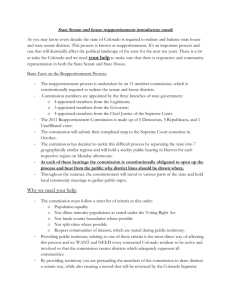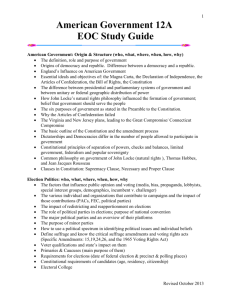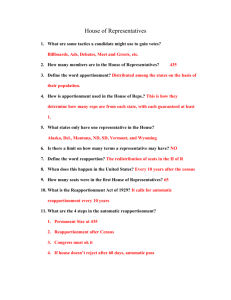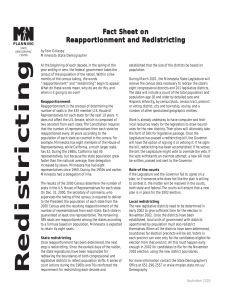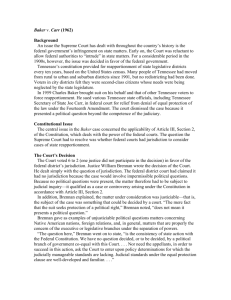Hawaii Legislature
advertisement
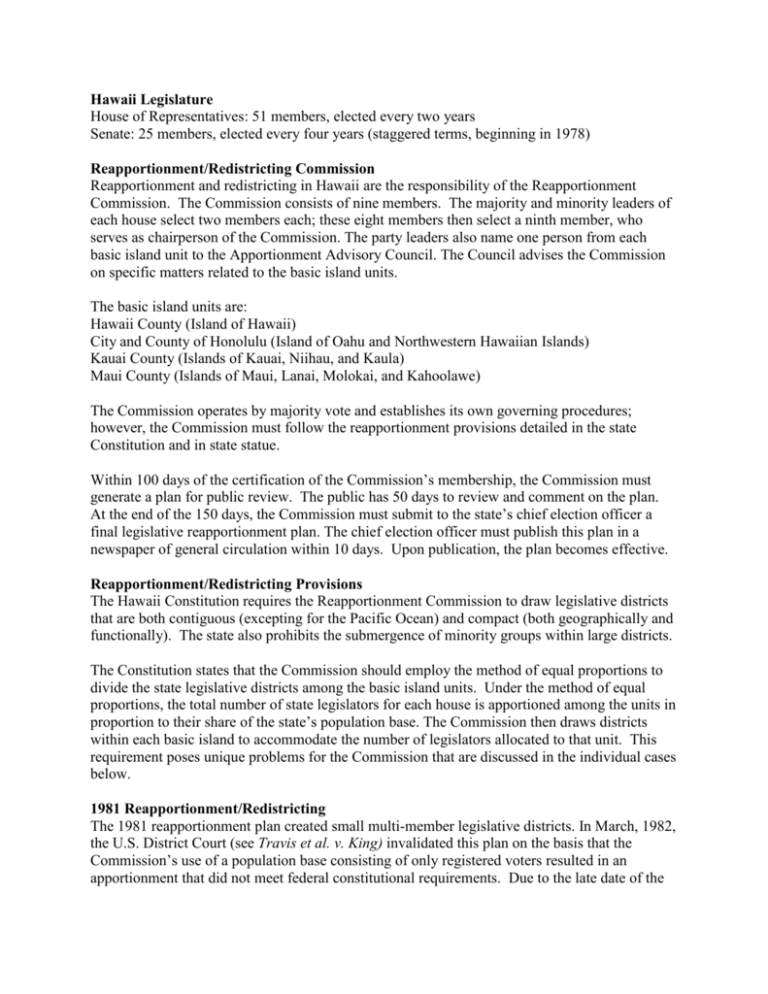
Hawaii Legislature House of Representatives: 51 members, elected every two years Senate: 25 members, elected every four years (staggered terms, beginning in 1978) Reapportionment/Redistricting Commission Reapportionment and redistricting in Hawaii are the responsibility of the Reapportionment Commission. The Commission consists of nine members. The majority and minority leaders of each house select two members each; these eight members then select a ninth member, who serves as chairperson of the Commission. The party leaders also name one person from each basic island unit to the Apportionment Advisory Council. The Council advises the Commission on specific matters related to the basic island units. The basic island units are: Hawaii County (Island of Hawaii) City and County of Honolulu (Island of Oahu and Northwestern Hawaiian Islands) Kauai County (Islands of Kauai, Niihau, and Kaula) Maui County (Islands of Maui, Lanai, Molokai, and Kahoolawe) The Commission operates by majority vote and establishes its own governing procedures; however, the Commission must follow the reapportionment provisions detailed in the state Constitution and in state statue. Within 100 days of the certification of the Commission’s membership, the Commission must generate a plan for public review. The public has 50 days to review and comment on the plan. At the end of the 150 days, the Commission must submit to the state’s chief election officer a final legislative reapportionment plan. The chief election officer must publish this plan in a newspaper of general circulation within 10 days. Upon publication, the plan becomes effective. Reapportionment/Redistricting Provisions The Hawaii Constitution requires the Reapportionment Commission to draw legislative districts that are both contiguous (excepting for the Pacific Ocean) and compact (both geographically and functionally). The state also prohibits the submergence of minority groups within large districts. The Constitution states that the Commission should employ the method of equal proportions to divide the state legislative districts among the basic island units. Under the method of equal proportions, the total number of state legislators for each house is apportioned among the units in proportion to their share of the state’s population base. The Commission then draws districts within each basic island to accommodate the number of legislators allocated to that unit. This requirement poses unique problems for the Commission that are discussed in the individual cases below. 1981 Reapportionment/Redistricting The 1981 reapportionment plan created small multi-member legislative districts. In March, 1982, the U.S. District Court (see Travis et al. v. King) invalidated this plan on the basis that the Commission’s use of a population base consisting of only registered voters resulted in an apportionment that did not meet federal constitutional requirements. Due to the late date of the Court’s decision, the Commission could not develop a new plan prior to the 1982 elections. As a result, court-appointed special masters drew an interim plan in May 1982. The plan divided the State into 25 single-member Senate districts and 51 single-member House districts. The population base for the court plan equaled the permanent residential population less nonresident military personnel and dependents as well as nonresident students. In January 1984, the Reapportionment Commission adopted a new plan that established new single-member districts for both the House and Senate. Hawaii used this plan for all elections from 1984 through 1992. 1991 Reapportionment/Redistricting The Reapportionment Commission filed its final reapportionment plan containing the House and Senate maps with the chief election officer in July 1991. The Commission based its plan upon the permanent resident population base less nonresident military personnel and dependents as well as nonresident students. The House plan contained 51 single-member districts, and the Senate plan contained 25 singlemember districts. The plan also created one “canoe” district (a district covering portions of more than one basic island unit) in both the House and Senate. These districts roughly overlapped the same parts of the Islands of Kauai and Maui. The Reapportionment Commission needed to create “canoe” districts in order to strike a balance between the demands of the Hawaii Constitution (preserving the integrity of the basic island units) and of the federal government (mandating one-man, one-vote and forbidding fractional voting in the state legislature). Hawaii used this plan for all elections from 1994 through 2000. 2001 Reapportionment/Redistricting The Reapportionment Commission did not present a final plan to the chief election officer until December 2001. Debates surrounding the calculation of the population base and the continued existence of “canoe” districts delayed the plan. The Commission, at the insistence of the neighbor isles, once again based its plan upon the permanent resident population base less nonresident military personnel and dependents. In addition, the Commission eliminated both the House and Senate “canoe” districts split between Kauai and Maui. The whole of the formerly split Senate district now sits on Maui, and the whole of the formerly split House district now sits on Kauai. As a result the maximum population deviation between legislative districts now nears 30 percent. The intra-basic island unit House and Senate “canoe” districts in Maui County now pair Lanai, Molokai, and Kahoolawe with rural East Maui, rather than West Maui which was the case in the 1990s. The House plan contains 51 single-member districts, and the Senate plan contains 25 singlemember districts. Hawaii intends to use this plan for all elections from 2002 through 2010. Staggering of Senate Terms In 1978 a state Constitutional Convention amended the Constitution to stagger Senators’ terms. Following the 1978 election, the state divided the members of the Senate into two classes. The first class consisted of the 12 senators elected with the highest percentage of votes in their district. The first class won full four-year terms. The other 13 members of the Senate became the second class, won shortened two-year terms, and had to run again in 1980 to win full four-year terms. The Convention also added a provision to the Constitution that allowed senators to complete their term of office after reapportionment. The “holdover” provision authorized the Reapportionment Commission to state the district a senator would represent for the remainder of the senator’s term, if the senator’s term extended past the general election at which reapportionment occurred. In the 2000 general election, the voters approved a Constitutional amendment that eliminated the “holdover” provision. Now, in first election after reapportionment (and as occurred in 2002), all Senate seats are subject to election in the new districts. The Reapportionment Commission determines those senators who will serve two-year terms by identifying the 12 new Senate seats with the smallest percentage of population that participated in a Senate election in the year 2000 and designating those seats to have two-year terms that expire in 2004. 1984-2000 Senate Staggering: First Class – 1, 4, 6, 7, 10, 13, 17, 18, 19, 21, 22, 23 Second Class – 2, 3, 5, 8, 9, 11, 12, 14, 15, 16, 20, 24, 25 2004-2010 Senate Staggering: First Class – 1, 3, 5, 6, 7, 12, 16, 17, 18, 21, 22, 23 Second Class – 2, 4, 8, 9, 10, 11, 13, 14, 15, 19, 20, 24, 25 Description of Legislative Districts 1992-2000: Hawaii County – Hawaii (SS: 1, 2, 3; SH: 1, 2, 3, 4, 5, 6) City and County of Honolulu – Northwestern Hawaii Islands (SS: 25-part; SH: 51-part) and Oahu (SS: 8-24, 25-part; SH: 15-50, 51-part) Kauai County – Kauai (SS: 6-part, 7-part; SH: 12-part, 13, 14-part), Niihau (SS: 7-part; SH: 14part) and Kaula (SS: 7-part; SH: 14-part) Maui County – Maui (SS: 4-part, 5, 6-part; SH: 7-part, 8, 9, 10, 11, 12-part), Lanai (SS: 4-part; SH: 7-part), Molokai (SS: 4-part; SH: 7-part) and Kahoolawe (SS: 4-part; SH: 7-part) 2002-2010: Hawaii County – Hawaii (SS: 1, 2, 3; SH: 1, 2, 3, 4, 5, 6, 7) City and County of Honolulu – Northwestern Hawaii Islands (SS: 25-part; SH: 51-part) and Oahu (SS: 8-24, 25-part; SH: 17-50, 51-part) Kauai County – Kauai (SS: 7-part; SH: 14, 15, 16-part), Niihau (SS: 7-part; SH: 16-part) and Kaula (SS: 7-part; SH: 16-part) Maui County – Maui (SS: 4, 5, 6-part; SH: 8, 9, 10, 11, 12, 13-part), Lanai (SS: 6-part; SH: 13part), Molokai (SS: 6-part; SH: 13-part) and Kahoolawe (SS: 6-part; SH: 13-part)
